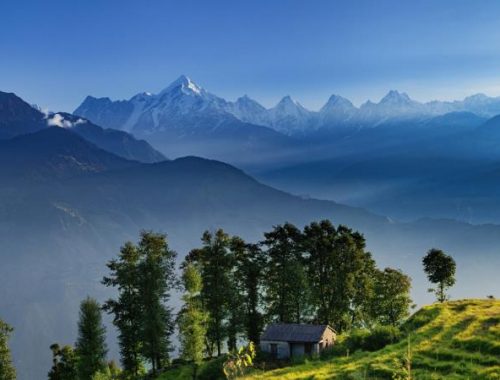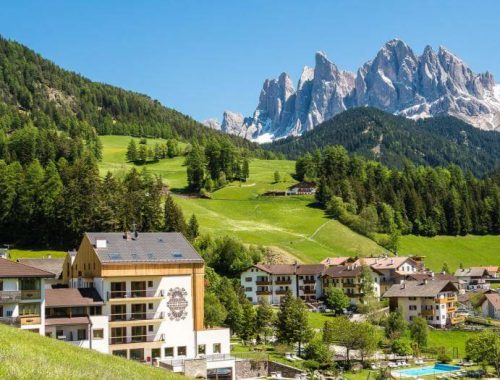Sea level rise is a concern in all coastal regions in the world. Bangladesh happens to be among the most vulnerable areas. But for all the talk about how vulnerable the country is, the river laden land has evolved to create mechanisms that naturally counter sea level rise. Environmental scientist Jonathan Gilligan says this aspect is often not understood.
This is not to say there is no risk from human induced sea level rise and all the commotion about part of the country submerging underwater deserves less attention. But the geographical area known as Bangladesh has for centuries acted as the big basin that paves the way for the mighty Brahmaputra and Ganges to unite with the sea at the Bay of Bengal. The land has learned how to survive rise of water.
It does so through the fascinating natural mechanism of depositing sediment. That is how it has managed to stay above water for thousands and thousands of years, said Prof Gilligan. But this might change quite soon.
An associate professor at Vanderbilt University in the United States, Gilligan studies the interactions between human society and the environment.
His work requires an interdisciplinary approach, and as a result he often works with teams that have social scientists, natural scientists and engineers. The interdisciplinary approach is necessary to understand how the actions of communities affect environment around them and how the changing environment – that is changed both by the actions of the community and also actions from the outside like climate change then affect the livelihood of the community.
“And by trying to understand the two together, we can then understand better how the environmental change will affect the community and how the community might adapt,” he said.
Gilligan, who worked in Sri Lanka on how paddy farmers are affected by water scarcity, has carried out a lot of research work in the southwest coastal areas of Bangladesh.
“Climate change has a lot of effects on the ground. My focus primarily is on how the coastal communities are affected by increased flood hazards due to subsidence of the land combined with sea level rise and also how increasing salinity is affecting community,” he said.
To understand the effects of sea level rise Gilligan looks at how the communities are using their land, how the polders are affecting the changing rivers and how they are affecting the land inside the polder.
“My group is currently studying how the erosion of the river banks and the formation of ‘ghashland’ is going to affect communities. And how climate change interacts with all the activities along the river; and the combination of the land use and the communities with the sea level rise. You need to understand the combination to understand the effect on the communities.”
Gilligan says the impacts of climate change and sea level rise is going to be very visible in the next 20 to 30 years and they will become increasingly severe through the rest of this century, because the sea level rise is speeding up.
“But what often doesn’t get understood is there’s also a tremendous natural resource that Bangladesh has and this is the sediment that is carried in the rivers. Over the last several thousand years there has been natural sea level rise, which is not as severe as the human sea level rise.”
“But with the natural sea level rise the land has risen at the same rate as the sea level rise, because there is a natural balance between the sea level rise and the sediment that comes with the rivers and deposit on the land,” he said.
This will allow Bangladesh to survive natural sea level rise as it has for millenia. And if the sea level rise does not exceed a certain level the land will simply rise at the same rate as the sea.
“But if the sea level rise become too rapid or something stops the sediments coming in the river, either of those would mean sea level rise would become much more severe,” said Gilligan.
With the Polar ice melting at unprecedented rates, the worse case scenario is not out of the picture. In fact, as scientists estimate, it is imminent.
“Some lands can be rescued from the sea level rise, because there’s enough sediment to build up the land by several milimetres per year. The question is how the rivers and the land and the polders are managed to try to get the maximum benefit from that sediment, to raise the land up as much as possible, so that the sea level rise does not drown too much.”
Gilligan is currently studying how the changes from human contribution are affecting migration.
“There will be migration from places where the rise is too rapid. But migration does not happen just because of environmental stresses. It happens for economic reasons. What becomes very important to understand is that migration can be a valuable response to climate change. But it can also bring economic opportunities to pull people out of poverty,” he said.
Bangladeshi people have traditionally employed many mechanisms to cope with the natural floods that occur regularly in the delta. Embankments are one of the methods that have been used for many years. A previous study by Gilligan found that embankments across the coastal plain of Bangladesh for preventing tidal inundation of the landscape also caused disruption in sediment flow.
While these embankments were necessary for rice cultivation and to prevent food shortages in Bangladesh, these also cut off Bangladeshi lands from their riverine sediment supply. Consequently, most lands today have subsided far below mean high water levels, making them increasingly susceptible to severe flooding from waterlogging and the impacts of storm surges.
The study, where Gilligan was one of the researching scientists, found that embankments constructed since the 1960s are the main reason for lower land elevations along coastal areas in Bangladesh. Within this area, some are experiencing more than twice the rate of the most worrisome sea-level rise projections from the United Nations’ Intergovernmental Panel on Climate Change.

Disruption to sediment transfer is also likely to happen from river diversion projects by India. The Farakka Barrage has caused significant political tension since the 90s between Bangladesh and its big neighbour. But Farakka actually does not stop sediment flow to any significant level, Gilligan said.
“The Farakka Barrage has been very controversial. The research by some of my colleagues who I work closely with, they are geologists – that research is suggesting that Farakka Barrage has not been significantly affecting the sediment transport,” said Gilligan.
However, this will not be the case if India implements its other river diversion projects.
“If India implements the big river diversion project that is being considered, that could have very serious impact. That could divert a lot of sediment out of the river. An it could cause harm to Bangladesh,” he said.
Jonathan Gilligan is currently developing models to study how the diversion of sediment could affect the adaptive capacity of sea level rise within Bangladesh.




